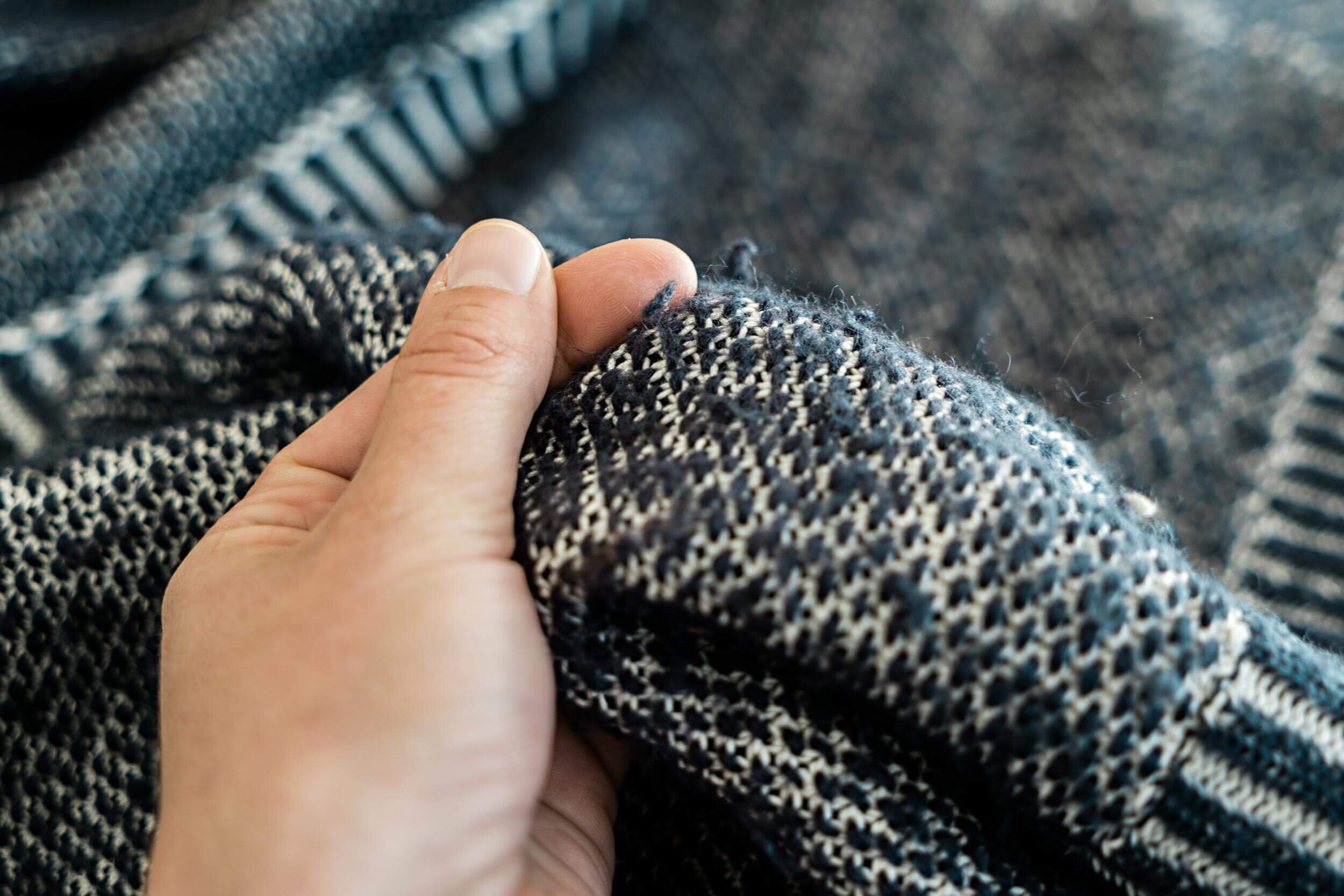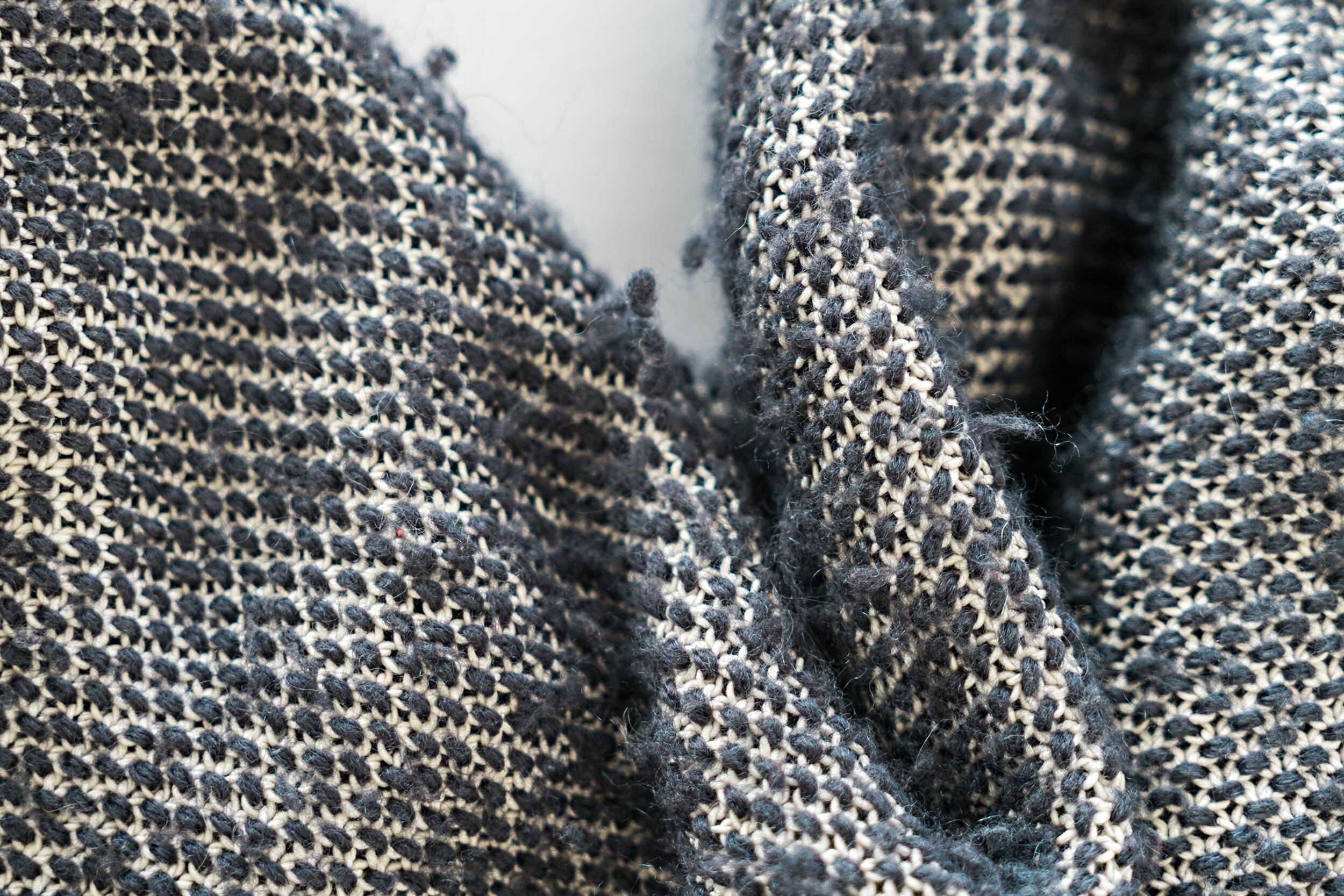FABRIC PILLING
De-mystifying upholstery
Last time we talked about abrasion and the Martindale test, but abrasion isn’t the only thing to consider when choosing a fabric. You shouldn’t bypass a gorgeous fabric simply because it’s not ‘heavy-duty’. We often have several criteria we use to make our decisions, here are some we think are valuable to consider: type of room, type of furniture, colour, pattern and texture. Like most things we choose to invest in, it’s a ‘big picture’ choice that ultimately comes down to you, your needs and the design you prefer.
But this time, let’s talk about fabric pilling or lint, if you will. I’m sure you’re familiar with the issue both from furniture, bedding and clothing. It’s a common problem, but pilling isn’t necessarily a sign of poor quality, but rather one of friction and fibres.
What is a ‘pill’?
A pill is the result of loose fibres making their way to the surface of the fabric where they lump together from abrasion into small balls. These balls also contain fibres that are still secured in the weave which causes them to become stuck on the surface. The friction is caused by everyday use and contact, including laundering.
While fabric pilling may be annoying and ‘unsightly’ it does not affect the longevity of the fabric and is generally easily removable. Pilling is simply a story of loose fibres and wear. The easiest way to remedy the issue is with a lint shaver which can be purchased in most craft and sewing stores. Simply shave off the balls as they occur. Over time less pilling should appear as there are less lose fibres. Think of it like wearing in something new. It takes a little bit of getting used to before it relaxes completely into your environment.
Another factor that comes into issues of pilling in upholstery is the lack of lining on internal cushioning. Without lining the fibres from the cushions will mix in with the fibres of the external fabric over time and add to the pilling.
Different fabrics, different pills
Not all fabrics wear the same. If pilling is a concern there are textile choices that are less likely to pill than others. Overall, man-made fibres pill easier than natural fibres. This is because natural fibres are generally looser and fall off more easily, whereas man-made fibres are stronger and become visibly stuck to the fabric. A fabric blend of strong and weak fibres, like polycotton, will have more visible pill as the weaker fibres break loose they will be held together and attached to the fabric by the stronger fibres. Another factor that play in is the type of weave. The tighter the weave, the less likely it is to pill easily.
To break it down, man-made fabric is made for performance, but it will pill easily.
Natural fibres like cotton, linen and wool are least likely to pill and synthetic fibres like polyester, acrylic, nylon and rayon are most likely to pill. Fabric blends will come out the worst. But this isn’t a sign of poor quality or a defect, it’s simply a question of composition and wear. For fibres like wool, pilling is a natural part of the process.
Are fabrics tested for pilling?
In Australia the Martindale test is used for pilling as well. But instead of testing abrasion, the fabric is placed facing against each other and rubbed in a figure 8 motion for a set number of cycles. The results are scaled from 1-5, 1 meaning severe piling and 5 no piling. The higher the number, the more resistant the fabric is to pilling. The ‘score’ is listed on the fabric information along with the Martindale score, like on this sample from the Deploeg website.
Image from: https://deploeg.com/nl/
What can I do about it?
Ultimately, the best thing we can do about pilling is to take the ‘whole picture’ approach. Upholstery fabrics, much like the furniture they sit on, requires time and care. To live up to its full potential and live its best, and longest, life, regular care and maintenance is needed. Pilling should decrease with time, it will be worst in the first 4-6 months but can be easily removed.
If you do have fabric pilling, get yourself a lint shaver and you’ll be right as rain, or if you are shopping for fabrics and concerned about pilling, the above information will help you in making the choice most suitable for you and your furniture.
Warwick has some helpful tips in how to care for your fabric on their website for further reading.
We have a range of fabrics available and offer fabric consultations as part of our restoration process. We also send out fabric swatches if you can’t come for an in-house consultation.
Image by Dida Sundet Photography



